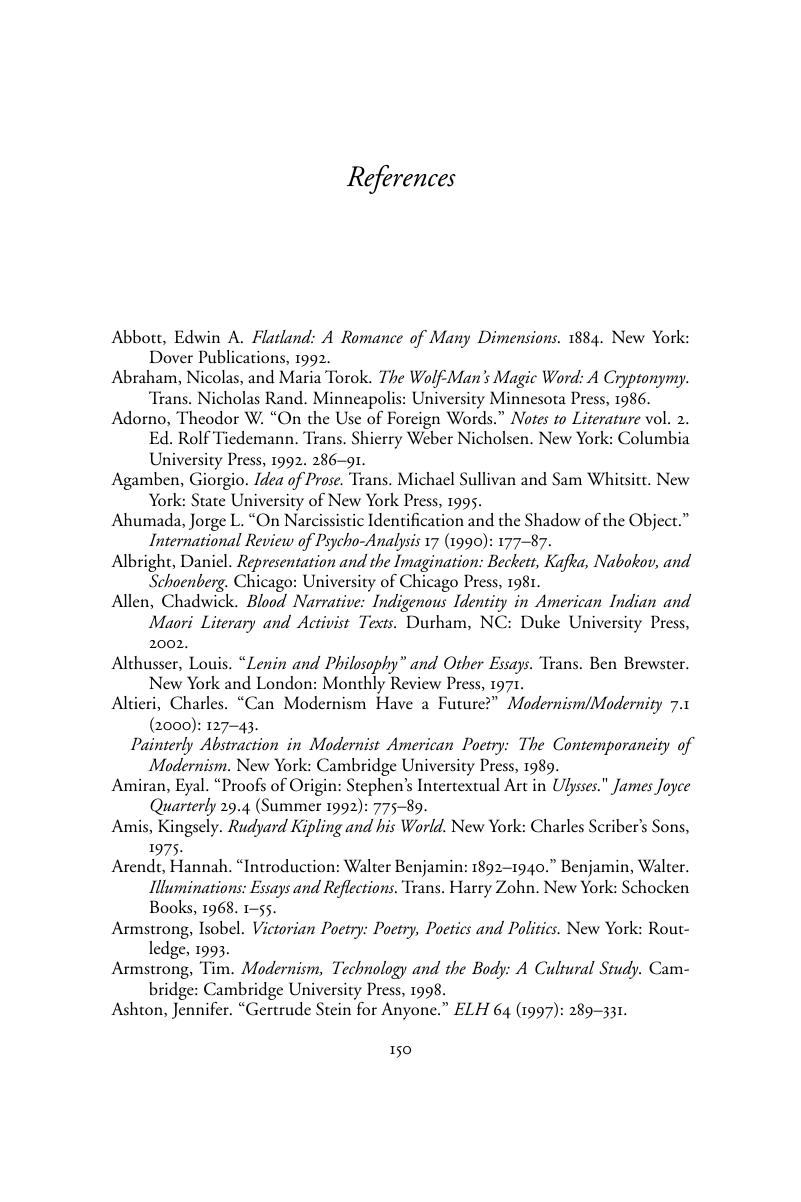Book contents
- Modernism and the Materiality of Texts
- Modernism and the Materiality of Texts
- Copyright page
- Dedication
- Contents
- Figures
- Preamble
- Book part
- Glossary
- Chapter 1 Nonsense and Motivation
- Chapter 2 VSW
- Chapter 3 The Erasure of Alice Toklas and Gertrude Stein
- Chapter 4 Barrie's Object Relations
- Chapter 5 Late English Empire Nonsense
- Chapter 6 George Herriman's Black Sentence
- Chapter 7 Afterword
- Notes
- References
- Index
- References
References
Published online by Cambridge University Press: 05 August 2016
- Modernism and the Materiality of Texts
- Modernism and the Materiality of Texts
- Copyright page
- Dedication
- Contents
- Figures
- Preamble
- Book part
- Glossary
- Chapter 1 Nonsense and Motivation
- Chapter 2 VSW
- Chapter 3 The Erasure of Alice Toklas and Gertrude Stein
- Chapter 4 Barrie's Object Relations
- Chapter 5 Late English Empire Nonsense
- Chapter 6 George Herriman's Black Sentence
- Chapter 7 Afterword
- Notes
- References
- Index
- References
Summary

- Type
- Chapter
- Information
- Modernism and the Materiality of Texts , pp. 150 - 167Publisher: Cambridge University PressPrint publication year: 2016



